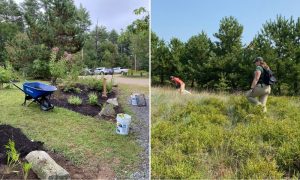(by Diane De Luca)
A groundbreaking study analyzing 12.6 million butterfly sightings reveals a disturbing reality:
- 22% Decline in butterfly numbers across the U.S. since 2000 – an alarming rate that could have ripple effects across ecosystems.
- 40% Median Drop for most species – impacting butterflies big and small, specialized and generalists, across every region of the country.
- Losses are driven by habitat loss, pesticide use, and climate change.
These findings point to broader insect declines. If butterflies—one of the most closely monitored insect groups—are struggling, many other species may be in even greater danger. Without insects, ecosystems break down, threatening the plants and animals that rely on them.
What Can You Do? Support butterflies and other pollinators by:

- Planting pollinator-friendly gardens with native plants. (Stay tuned for an educational article series on how to plant a pollinator-friendly garden this spring.)
- Reducing or eliminating pesticide use.
- Protecting natural habitats in your community.
- Participating in butterfly counts across New Hampshire. Find out more about the New Hampshire Butterfly Monitoring Network.
Small actions at home can play a big role in protecting these vital creatures and preserving biodiversity for future generations.
Cover photo of a Crescent butterfly nectaring in the McLane Center pollinator gardens, by Diane De Luca.
